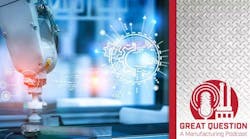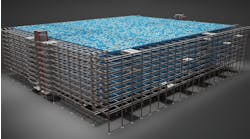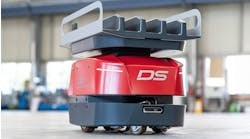By 2050, Our World In Data projects 68% of the world’s population will live in urban areas. In fact, urbanization will add another 2.5 billion people to cities over the next three decades, meaning that environmental, social, and economic efficiency is a must. Here, Claudia Jarrett, US country manager at EU Automation explains how the technologies of Industry 4.0 can aid progression to society 5.0.
Since the emergence of Industry 4.0, it has been apparent in all sectors of manufacturing that automation, digitalization, and other information technologies are boosting productivity and transforming factories. But despite the rapid advancement of these technologies, there are concerns about potentially adverse societal consequences.
Automation displacing human roles and increasing disparity and unequal distribution of wealth are factors that leave question marks over the impact digital technology has on society. However, during a time in which things, people, and devices are connected, a new social revolution could allow these technologies to meet the needs of the people and the environment.
The Fifth Social Revolution
What is a social revolution? It is described as the sudden changes in the structure and nature of society, such as advances in culture, philosophy, and technology. The latest revolution, Society 5.0, combines the creativity of people with digital technologies to lead us toward sustainable development.
Right now, Society 5.0 is developing in Japan. The concept is an example of attempts to bring human concerns into how we think about technologically advanced environments. For instance, Japan is creating a ’super-smart society’ to improve healthcare, mobility, and infrastructure for its inhabitants. This will be done through the adoption of new technologies, like artificial intelligence (AI), robotics, big data, and drones.
Japan is using Society 5.0 to solve societal problems with technology. Examples include cutting carbon emissions with driverless vehicles, deploying robots to take care of the elderly, and inserting sensors to alert humans for patient care when required.
For a more novel application, AI is also utilized to tailor a person’s itinerary for a city break. In this example, AI technology would consider a person’s preferences, as well as the weather forecast, before designing a trip to their liking.
Traffic-Free
As a concept, Society 5.0 should be the framework for smart cities. With this technology at our fingertips, we should use it to develop, deploy, and promote sustainable development practices to address growing urbanization challenges.
A major challenge of urbanization is congestion in large cities, and as the Our World In Data report suggests, this problem is set to grow. With that said, congestion is also a colossal problem right now, as an INRIX study states that it causes $300 billion of financial damages every year in the USA alone, and drivers in cities can spend over 100 hours per year sitting in traffic.
Automation technologies are already being implemented to reduce such traffic figures. For instance, Vehicle-to-Infrastructure (V2I) technology is making traditional traffic signals smarter and more efficient. V21, the wireless exchange of data between vehicles and road infrastructure, is currently implemented in cities like Columbus in Ohio, using data from Government vehicles to improve the timing of traffic lights and thus reduce congestion.
Sensors collect and transmit the movement and speed points from individual Government vehicles in the city. In Columbus, this information was then analyzed and used as a benchmark for the city’s smart city pilot program.
Go Green
Toronto in Canada is also using smart city technologies to improve sustainability in its Quayside waterfront area. The city is accommodating parts of its area for self-driving cars, green energy, public WiFi, and heated cycle lanes and sidewalks.
To reduce congestion, the city has implemented a subterranean level for delivering transportation and removing waste. This area is managed autonomously, using robotic systems to transport waste from different areas of the city.
The system uses sensors to collect data on energy consumption and traffic patterns, as well as data from residents on their volume of trash. This allows the system to optimally plan when to collect waste.
Toronto’s ambitious plan also includes a thermal grid strategy that leverages waste heat from nearby data centers and other industrial sites to provide district-wide heating. Sound idyllic, but it is already being realized in other areas of the world.
A similar concept applied has been applied at one of Equinix’s green data centers in Amsterdam. The data center, AM3, uses aquifer thermal energy storage to cool equipment via cold groundwater when temperatures rise above 18°C. This eliminates the need for traditional mechanical cooling and is far more environmentally friendly.
Energy efficiency, waste reduction, and reduced congestion are just a few of the possibilities technology could bring to Society 5.0. However, deploying automated technologies to environments that were traditionally brick and motor is not without its challenges.
Therefore, local authorities and governments need to familiarise themselves with the automation required to make smart cities a reality and form partnerships with experts in the field, like EU Automation that can guide organizations in the right direction.
Urbanization could add another 2.5 billion people to cities over the next three decades—so these technologies are more important than ever before to ensure society can thrive.











